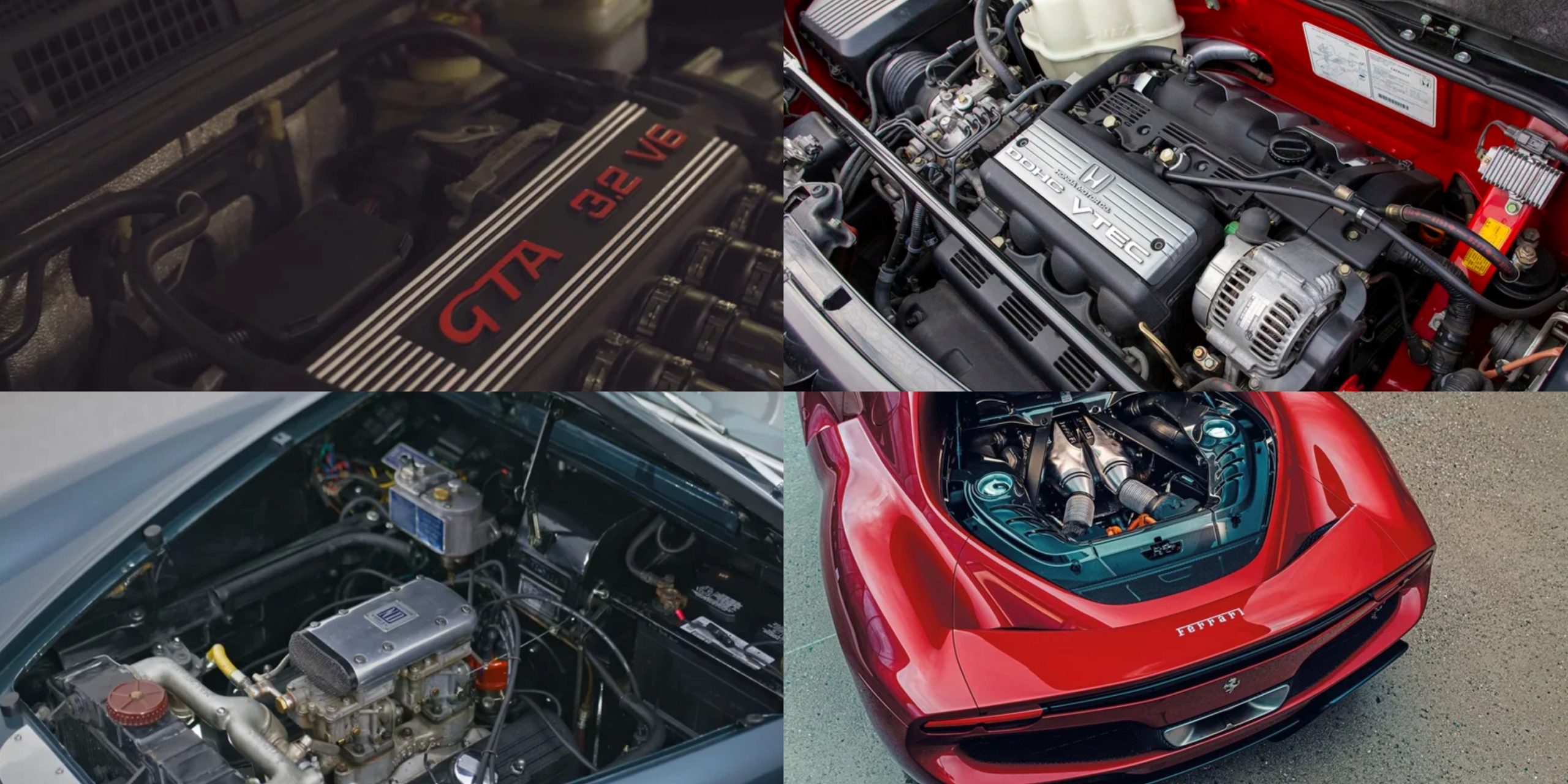Many car fans often overlook the V6 engine because it’s seen as complicated and not naturally balanced. It never really got the attention that inline-six or V8 engines did. But today, as most car makers focus on turbocharged four-cylinder engines, the V6 starts to look more appealing.
It runs more smoothly, feels more polished, and doesn’t seem as strained when you push the gas. Because of its smaller size, the V6 can fit into almost any car — something you can’t always do with an inline-six.
In the right setup, a V6 can also sound amazing. While there are more engines out there like the inline-six, V8, V10, and V12 that are known for better sounds, this article shows that V6 engines can sound just as thrilling.
They have a mix of smooth tones with just the right amount of roughness. Plus, many of the engines mentioned here are powerful and give some sports cars very quick acceleration. From classic Italian machines to rare French models, these are some of the best-sounding V6 engines ever made.
Also Read: 10 Pickup Trucks That Can Tow Over 10,000 Pounds for Years
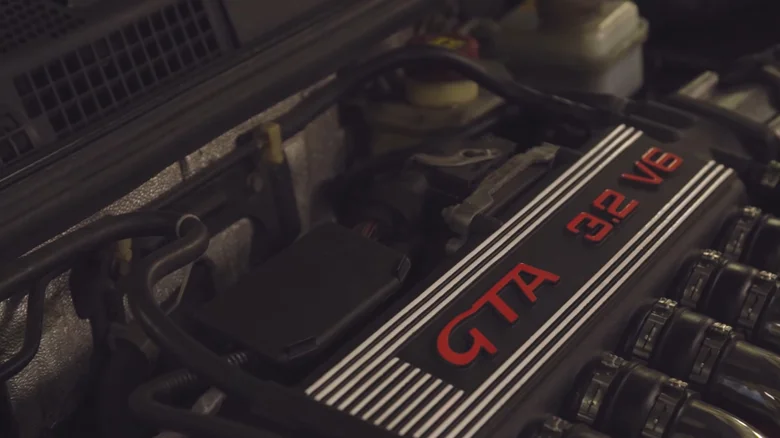
Alfa Romeo Busso V6 (1980–2005)
If you ask professionals which V6 engine is the best ever, the name “Busso” will probably come up right away. This engine, created by well-known engineer Guiseppe Busso, is Alfa Romeo’s most important engine and was used in many of their cars for a long time.
The Busso engine had a 60-degree angle between the two banks of cylinders, making it small enough to fit into most Alfa Romeo cars. That design also helped reduce heat loss and allowed air to flow more directly into the engine, which helped it run better.
Busso showed his smart design in other ways, too. The V6 doesn’t have balancing shafts, but it still runs smoothly because of a specially weighted crank pulley.
The early versions of the Busso V6 ranged from 2.0 to 3.0 liters and had two valves per cylinder. But it was the 24-valve versions, introduced in 1992, that really brought better power and fuel use. The final version, a 3.2-liter engine, made 240 horsepower and 221 lb-ft of torque, giving the stylish 147 GTA hatchback some serious power.
Even with all its strong performance, what truly set the Alfa Romeo Busso V6 apart was its sound. This isn’t just one of the best-sounding V6 engines — it’s one of the best-sounding engines, period. You notice its personality the moment you start it.
At idle, it has a deep, rich tone that becomes louder and more exciting as the engine speeds up, reaching a high-pitched, racecar-like peak. At high revs, it turns into something wild — raw but still smooth, with a natural-sounding roar. It’s the kind of engine that makes you want to keep revving just to hear the noise it makes.
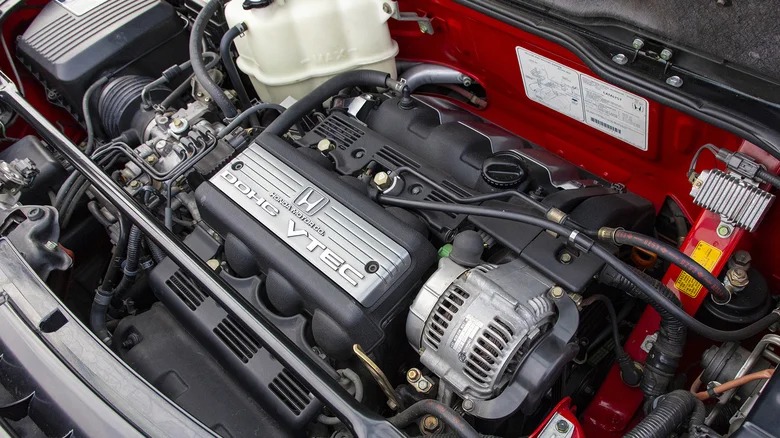
Honda/Acura NSX 3.0 V6 (1991–2005)
Lightweight body, well-balanced handling. A short, solid-feeling five-speed manual gearbox. A smooth V6 engine that loves high revs and sounds amazing. It’s clear that Honda (sold as Acura in North America) got the mid-engine sports car idea just right from the start.
Made to challenge brands like Ferrari and Lamborghini but with a unique Japanese approach, the first-generation NSX quickly became a legend. Even today, the original NSX is highly valued, with prices often going into the six-figure range.
Honda’s first supercar was filled with advanced technology. Its body design took inspiration from the F16 fighter jet, and the main frame was built almost entirely from aluminum to keep it light. Honda even created a special machine just for welding this material during production.
Then there’s the standout engine. The 3.0-liter V6 had an aluminum block, dual overhead cams, and 24 valves. One key feature was Honda’s VTEC system, which helped the engine breathe better at high RPMs, letting it rev all the way to an exciting 8,000 rpm. With 270 horsepower and 220 lb-ft of torque, the NSX could go from 0 to 60 mph in just 5.2 seconds.
Those few seconds are among the most thrilling you can experience, thanks to the beautiful sound of the C30A engine. Honda’s version of the V6 sounds clean and smooth, showing just how carefully it was engineered.
As you press down on the gas pedal, the power builds in a steady, predictable way, joined by a sharp intake sound. But when VTEC activates, the sound becomes truly exciting — a sharp, high-pitched scream that makes the whole experience unforgettable.
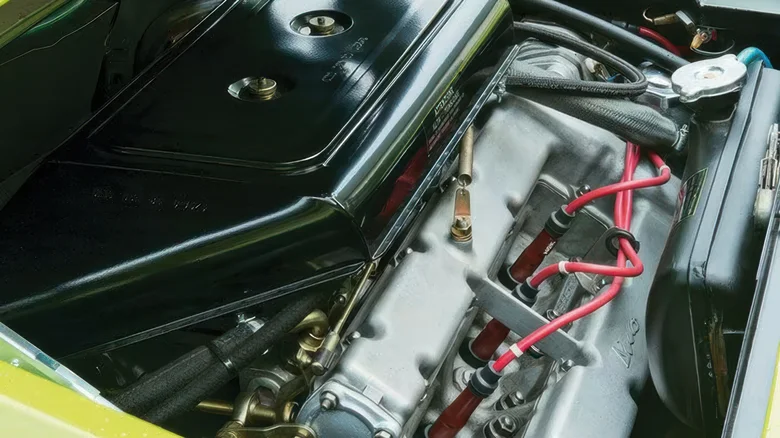
Ferrari Dino V6 (1967–1974)
The Dino was Ferrari’s first car made to appeal to a wider audience, especially younger buyers. It was small and light, with the engine placed in the middle of the car, and it was built for winding roads rather than race tracks. With a 2.0-liter V6 engine, the first Dino 206GT was very different from the usual V12-powered Ferraris.
The Dino is still known as one of the most fun-to-drive Ferraris ever made. A big reason for that is its V6 engine, which sounds just as impressive as Ferrari’s V12s from earlier years. It feels close to a race car, which makes sense since the engine was first used in a Formula 2 open-wheel racecar.
The Dino’s V6 has a raw and sharp sound, but it’s also clear and full of character. As the engine nears the redline, the sound becomes like a powerful melody. The five-speed gated manual transmission, considered one of the best ever made, added to the feeling, with its strong and mechanical feel when shifting.
This V6 didn’t just sound good — it had strong performance to match. The original 2.0-liter version made 180 horsepower, which was a big number at the time. Later, the 246GT version came with a 2.4-liter engine that made 195 horsepower.
It also produced more torque — 165 lb-ft compared to the earlier 137 lb-ft. Because the car was light, weighing only 2,615 pounds, it could go from 0 to 62 mph in a quick 7.1 seconds.
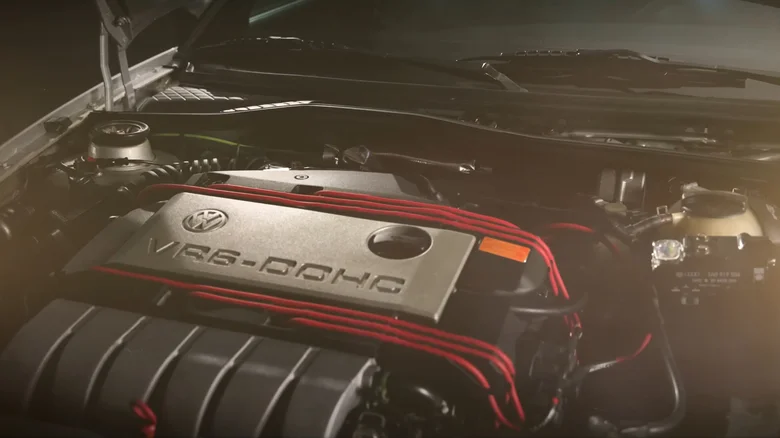
Volkswagen VR6 (1991–2024)
Is it an inline-six? Is it a V6? You can call Volkswagen’s VR6 whatever you like, but that doesn’t take away from the fact that it’s one of the most respected six-cylinder engines ever built. While it’s not a traditional V6, its setup still forms a tight “V” shape. Volkswagen named it the V-Reihenmotor-6 (V-inline-six), and with its 15-degree angle between the cylinder banks, it fits well on this list.
So, why go with the VR6 setup? It was all about keeping the engine size small. It was nearly as compact as a four-cylinder engine, which meant Volkswagen could fit it into front-wheel-drive compact cars like the Corrado — one of seven models that came with a VR6 engine. The VR6 was also better balanced than a typical inline-four, leading to smoother and more polished performance.
The earliest VR6 engines came in 2.8-liter and 2.9-liter versions, depending on the market, and made between 140 and 188 horsepower. Over time, Volkswagen introduced bigger versions, like the 3.6-liter engine found in the B6 Passat R36, which produced 295 horsepower. Volkswagen kept the VR6 going until 2024, when the 3.6-liter version in the Atlas SUV was swapped out for a 2.0-liter turbocharged four-cylinder.
That switch disappointed some longtime Volkswagen fans, mostly because of the VR6’s unique sound. It had a deep and throaty tone at low speeds, and at higher revs, it gave off a raspy but smooth intake sound. It remains one of the most distinctive and expressive six-cylinder engines ever created.
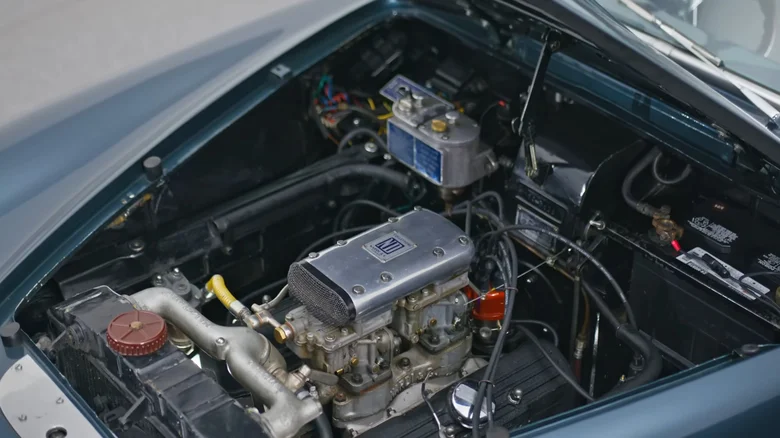
Lancia Aurelia V6 (1950–1958)
There’s no way the Lancia Aurelia could be left off this list. It was the first car ever to use a V6 engine, and it was important for other reasons too. The B20 GT version, for example, is considered the first modern grand tourer. The B24 Spider was one of the most beautiful cars ever designed by Pininfarina.
The Aurelia’s engineering was very advanced for its time, with independent suspension on both the front and rear, and great weight balance thanks to its transaxle setup. No matter which version you look at, the Aurelia has a timeless design that looks far more modern than most 1950s cars.
But the most lasting part of the Aurelia is how Lancia used the V6 engine. They chose a 60-degree angle to keep things balanced and made the cylinder head and engine block from aluminum.
The engine started as a 1.8-liter, but by the end of its production, Lancia had increased it to a 2.5-liter making 118 horsepower. That gave the B24 2500 GT version a top speed of 115 mph, which was quite impressive at the time.
Even more special is the way this early V6 sounds. At low and medium speeds, it has a smooth, free-flowing tone. As the engine revs higher, it becomes sharper and more mechanical in sound. And since the car didn’t have as much soundproofing as modern cars, you hear more of the moving parts inside the engine, which actually makes the experience more engaging.
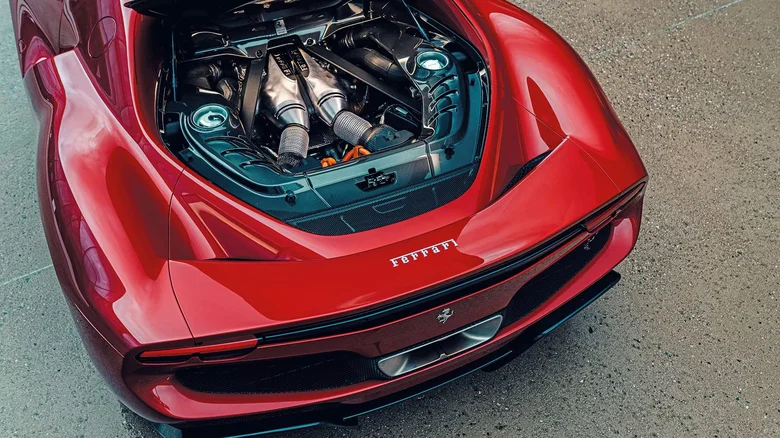
Ferrari 296 GTB 3.0 Twin Turbo V6 Hybrid (2021–Present)
Many people believe turbocharged engines can’t sound as good as naturally aspirated ones. While they do give a big power boost, they tend to quiet down the intake and exhaust sounds. But when you hear the Ferrari 296 GTB nearing the redline, that opinion might change — especially since this car is a hybrid.
Yes, the high-revving V8 in the 458 sounds better. But there’s no denying that Ferrari did an amazing job with the 3.0-liter twin-turbo V6 in the 296 GTB, which has a 120-degree layout.
You still get the exciting engine note that Ferrari is famous for. It sounds thrilling, aggressive, and full of character, with a sharp edge as the revs climb. It’s a little quieter than the V8 in the 458, but still extremely satisfying for a twin-turbo V6.
The sound is even more impressive when you look at the performance numbers. On its own, the twin-turbo V6 makes a strong 654 horsepower and 546 lb-ft of torque. With help from a 165-horsepower electric motor, the total goes up to 819 horsepower, all sent to the rear wheels through an eight-speed dual-clutch transmission.
As expected, the 296 GTB is incredibly fast in a straight line, going from 0 to 60 mph in just 2.4 seconds. The top speed of 205 mph is wild, too. And being a mid-engine Ferrari, the 296 GTB handles corners with great precision.
Ford GT 3.5 EcoBoost V6 (2016–2022)
Ford has a long history with V8 engines in its racing and performance cars. From the Mustang to the GT40, there’s usually a powerful V8 making a loud and deep sound. So when Ford released the GT supercar with a twin-turbo V6 engine placed in the middle, it caught a lot of people off guard.
But if a V6 works for Ferrari, then it can definitely work for Ford. And there’s no question that the Ford GT has serious power. With 647 horsepower and 550 lb-ft of torque, a light weight of 3,381 pounds due to its carbon fiber body, and a fast seven-speed dual-clutch automatic, it launches from 0 to 60 mph in just 3 seconds. The car’s advanced aerodynamics, inspired by race cars, help it reach a top speed of 216 mph.
The 3.5-liter EcoBoost V6 has a good sound, too. It doesn’t growl like a V8, but because the GT has very little sound insulation, the V6 fills the cabin with a mix of strong engine noise. At lower revs, it sounds deep and steady, and as the RPMs rise, you hear a sharp howl. The sound of the turbochargers adds to the experience, making it clear how much air the engine is pulling in as it delivers its full power.
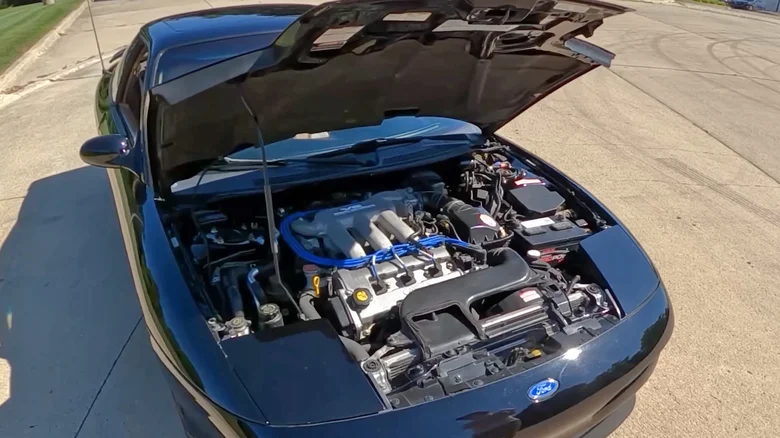
Mazda MX-6 / Ford Probe GT 2.5 V6 (1992–1997)
You don’t have to spend a lot of money to enjoy the sound of a smooth V6 engine. The second-generation Mazda MX-6 and Ford Probe GT may not have delivered supercar-level performance, but they were very affordable and fun to drive.
A major reason for that fun was Mazda’s 2.5-liter naturally aspirated V6, which powered the front wheels. This engine was actually an enlarged version of the 1.8-liter V6 from the MX-3, and it replaced the older 145-horsepower 2.2-liter turbocharged four-cylinder used in the earlier models. In these second-gen cars, the base engine was a 2.2-liter naturally aspirated four-cylinder.
With 164 horsepower and 160 lb-ft of torque, the V6 had good power for the time, helping the Probe GT reach 60 mph in just 7 seconds. Both cars came with a five-speed manual transmission as standard, sending power only to the front wheels.
That meant no drifting, but the sound experience made up for it. Mazda’s V6 had a smooth and easy flow to its sound, with a slightly raspy tone in the background that reminded you it was a V6. It wasn’t loud or harsh, but it still had a sporty edge. You’d probably find yourself pushing it close to the 7,000-rpm redline quite a bit.
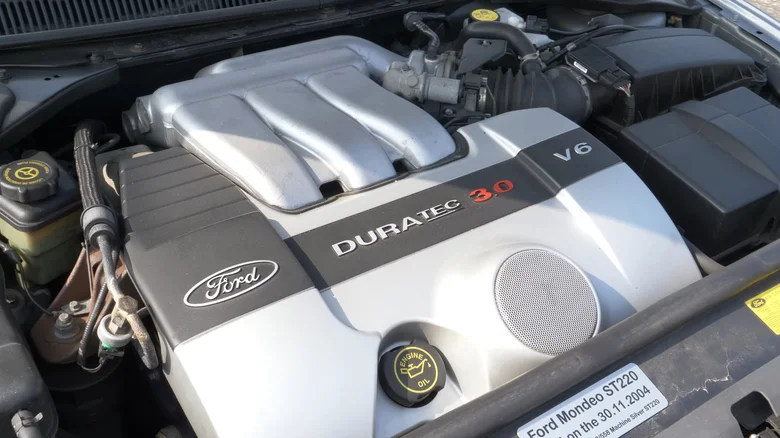
Ford Mondeo ST220 3.0 Duratec V6 (2001–2007)
Ford also had its own great-sounding V6 in the 1990s. Named the Duratec, this 60-degree 3.0-liter engine was made to replace the older 3.8-liter V6. It was quite advanced for its time, with dual overhead cams, four valves per cylinder, sequential multipoint fuel injection, and cast-iron liners in the cylinders.
Ford used it in several models like the Taurus and Mercury Sable, and later in cars like the Jaguar S-Type, Lincoln LS, Mazda 6, and the European Ford Mondeo ST220. A version with variable valve timing was added in 2006 for the Ford Fusion, Mercury Milan, and Lincoln Zephyr.
The Duratec V6 delivered strong performance, making 224 horsepower and 203 lb-ft of torque in the Mondeo ST220. The car could reach 60 mph in just 6.8 seconds, which was impressive for a front-wheel-drive sedan with a six-speed manual.
But what really made driving the ST220 fun was the sound. The Duratec V6 had a deep and strong tone at lower revs, and the sound built steadily as it got closer to the 6,800-rpm redline. It had a motorsport-like tone that made the experience more exciting. The sound was sharp and aggressive, but still smooth. Using a manual transmission made it feel even better.
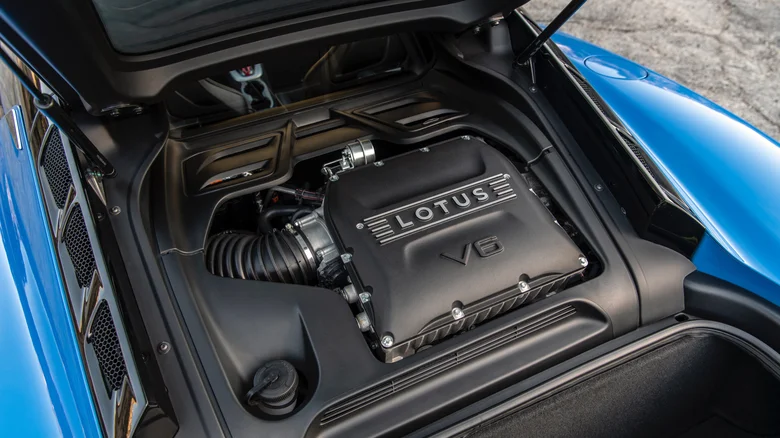
Lotus Emira Toyota-Sourced 3.5 Supercharged V6 (2023–present)
The Lotus Emira looks like a smaller version of a high-end supercar. It has bold styling, an exotic shape, perfect proportions, and is easily one of the most exciting sports cars released in recent years. Instead of focusing only on high horsepower numbers, it puts more attention on what really matters in a sports car — how it feels to drive.
Like all mid-engine Lotus models built for fun, the Emira shines on winding roads. Its hydraulic steering feels just right and gives clear feedback from the road. The car takes corners with no body lean and feels very well balanced. It even tells you when traction is starting to slip, giving you full confidence behind the wheel.
No matter which engine you pick, it’s fast in a straight line. The 400-horsepower, 2.0-liter turbo four-cylinder from AMG hits 60 mph in 3.8 seconds. But its sound is a bit quiet and it’s only available with a dual-clutch automatic.
For those who enjoy a more involved driving experience, the 400-horsepower, 3.5-liter supercharged V6 from Toyota might be the better pick. It comes with a six-speed manual. While the gear stick isn’t the most precise, it still makes the drive more engaging. It gets to 60 mph in 4.2 seconds, so it’s not far behind the turbo version.
The supercharged V6 has a more exciting sound too. It’s nothing special at low revs, but once you push it past 3,000 rpm, it comes alive. The Toyota engine makes a loud, mechanical, high-pitched noise that can give you chills.
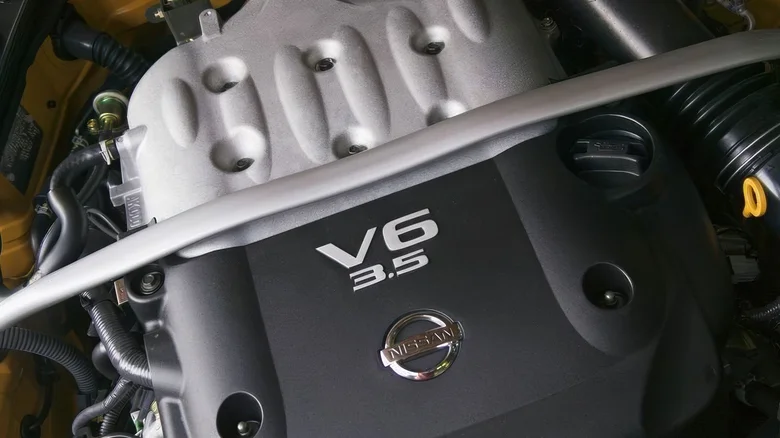
Nissan 350Z 3.5 V6 (2002–2009)
Nissan’s Z series has one of the longest and most respected histories in the sports car world, right up there with names like the Porsche 911, Ford Mustang, and Chevy Corvette. After a break from 1997 to 2002, Nissan brought the Z car back with the 350Z, and expectations were high.
Nissan used a front-to-mid engine setup with a naturally aspirated V6. Even without a turbocharger, the car performed well. The 3.5-liter V6 made 306 horsepower after a 2007 upgrade. It came with a six-speed manual as standard, and a lower-powered five-speed automatic as an option.
The manual had something extra — it could rev up to a fun 7,500 rpm, compared to 6,600 rpm in the automatic version. Pushing the engine to the limit didn’t just give a strong burst of speed (0–60 mph in 5.4 seconds), it made for a great sound too.
Even though it’s a V6, the VQ35HR engine sounds like something with more cylinders. It has a deep and rich tone at low revs, a strong and rumbling note in the middle, and near the redline, it turns raspy and aggressive — just what you want in a sports car. It growls with energy. Getting that kind of sound and excitement in a car at this price level was truly something special.
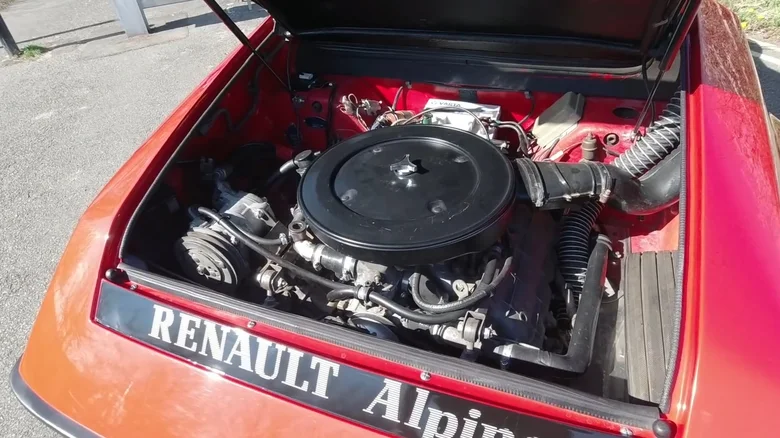
Alpine A310 Renault 2.7 PRV V6 (1976–1985)
Classic French sports cars aren’t very well known in North America. That’s unfortunate, because France has made some truly great ones over the years. One great example is the Alpine A310 — a stylish sports car that many people have never heard of. It has a bold and futuristic design, but also looks aggressive and strong, almost like a wild animal.
The A310 stood out for more than just its looks. It used fiberglass body panels and a tubular spaceframe chassis, which helped keep its weight down to only 2,183 pounds. Interestingly, Alpine chose a rear-engine, rear-wheel-drive setup, much like the Porsche 911. At first, the car had a small four-cylinder engine with 125 horsepower, which wasn’t very powerful.
Also Read: 10 Cars Best Suited for Mountain Driving in the Rockies
Things changed for the better in 1976 when Alpine gave the A310 a 2.7-liter PRV V6 engine. This engine was created in a partnership between Renault, Peugeot, and Volvo.
It produced 148 horsepower and 161 lb-ft of torque, and it came with a five-speed manual transmission. Because the car was so light, that power was enough to get it from 0 to 62 mph in 7.8 seconds, with a top speed of 140 mph.
The engine sounds great, too. It has a raw, rough, and raspy tone. While it doesn’t have the smoothness of something like an Alfa Romeo Busso V6, the sound builds up evenly as you rev higher. That tone fits the A310 perfectly. It’s a light sports car built for the joy of driving, and the engine sound adds to that fun.

